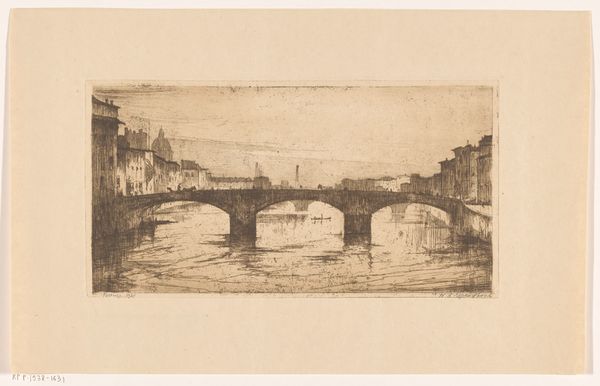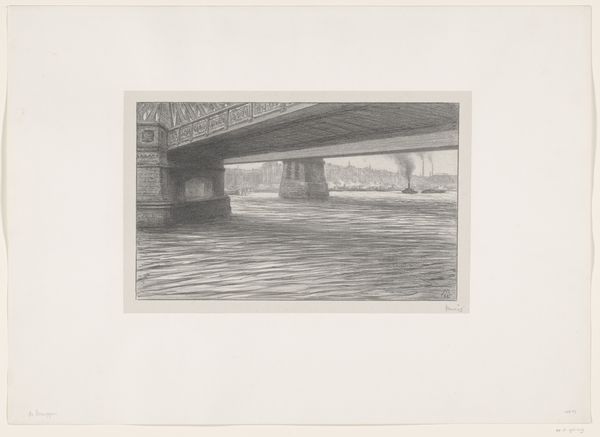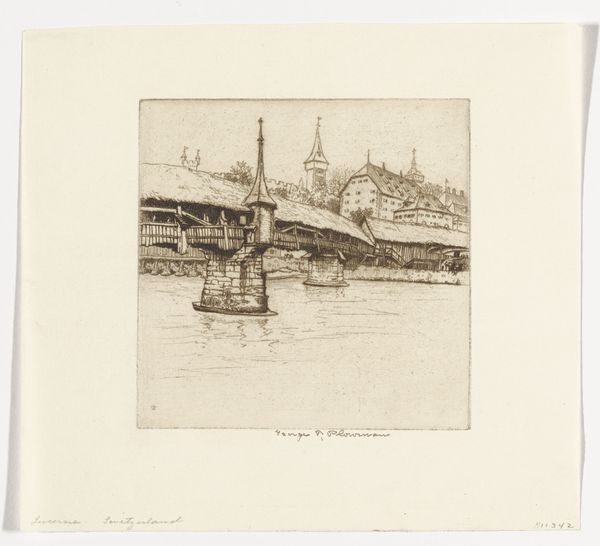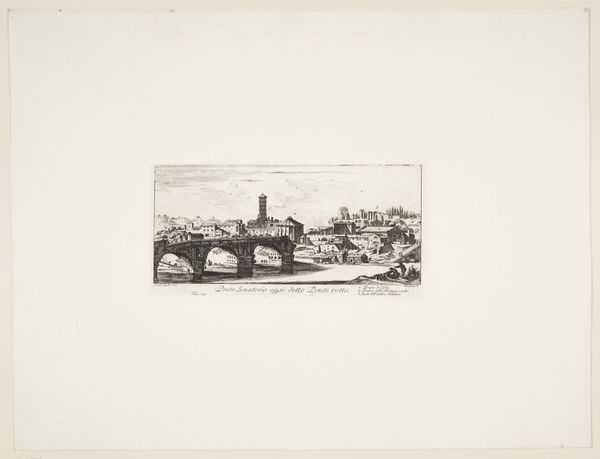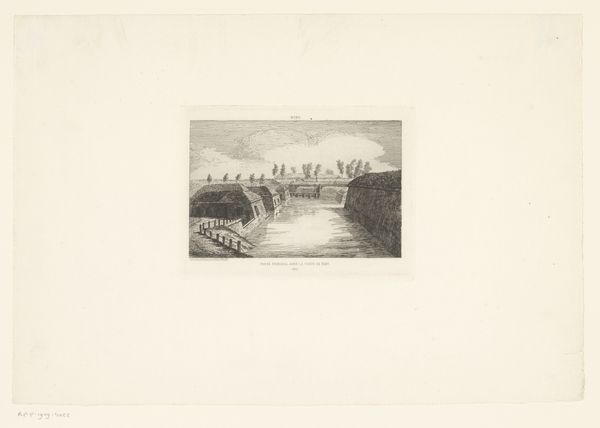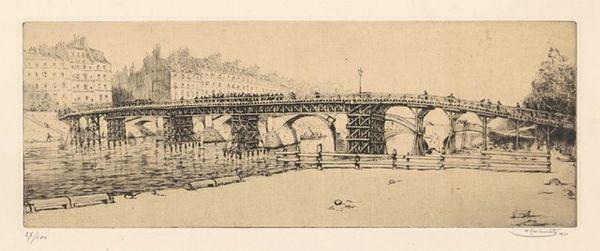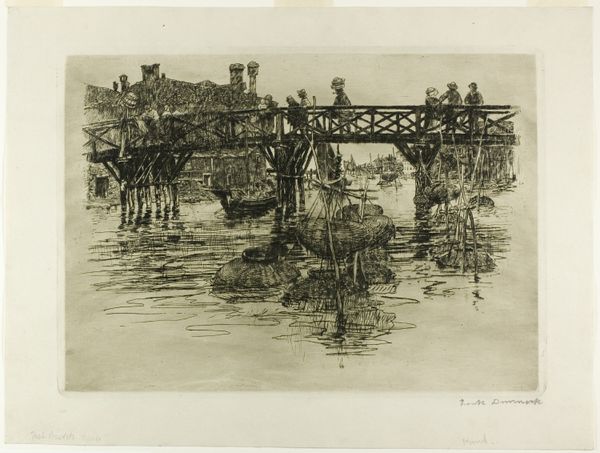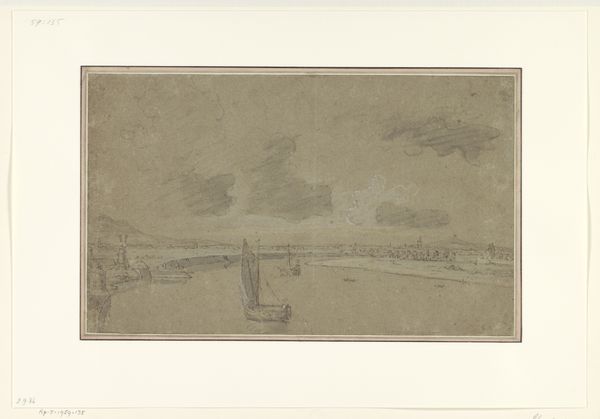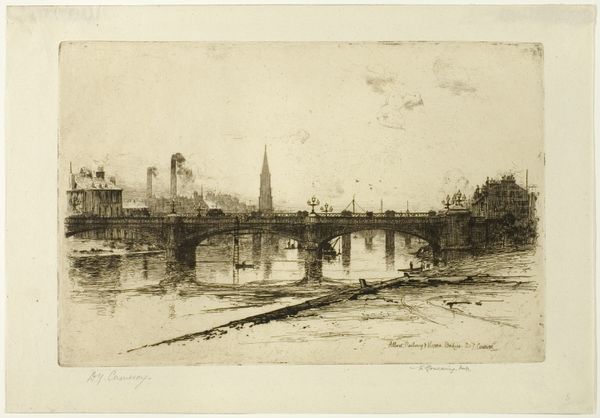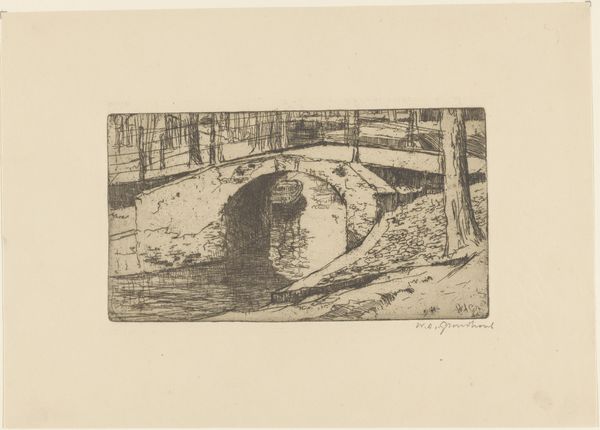
drawing, print, etching, paper
#
drawing
# print
#
etching
#
landscape
#
paper
#
cityscape
Dimensions: 157 × 225 mm (image); 160 × 226 mm (plate); 313 × 442 mm (sheet)
Copyright: Public Domain
Otto Henry Bacher made this etching, “Ponte Vecchio, destroyed plate,” using metal, ink, and paper. The etching process involves coating a metal plate with a waxy, acid-resistant substance, drawing an image through the wax, and then immersing the plate in acid. The acid bites into the exposed metal, creating lines. Ink is then applied to the plate, filling the etched lines, and the surface is wiped clean. Finally, the plate is pressed onto paper, transferring the image. In this case, the plate was deliberately destroyed, meaning that Bacher could only produce a limited number of impressions. This brings up questions about value and authenticity. Was Bacher responding to the mass production of images made possible by industrialization? By limiting the number of prints, he could create a sense of scarcity and exclusivity. This resonates with the Ponte Vecchio itself, originally a site of workshops, now known for its high-end jewelry shops. Ultimately, appreciating this print means considering the way labor, commerce, and artistry intertwine.
Comments
No comments
Be the first to comment and join the conversation on the ultimate creative platform.

